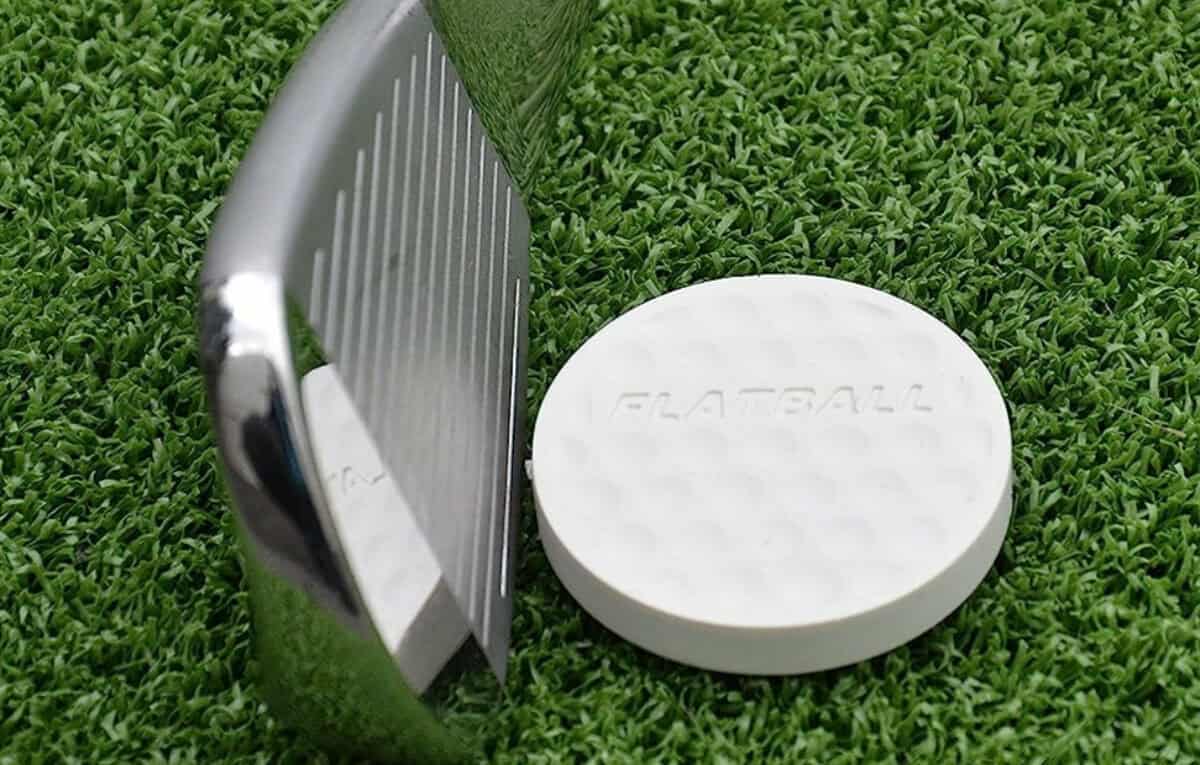How to Use Flatball Golf to Improve Your Game
Golfers are always looking for tools to improve their skills. One unique training aid that has grown in popularity is the Flatball – a ball with a flattened section designed to exaggerate impact and motion errors.
Learn how using a Flatball can ingrain proper mechanics. We’ll cover what a Flatball is, its intended benefits, tips for using it effectively, and drills to incorporate Flatball practice.

What is Flatball Golf?
Flatball Golf is a training system consisting of patented balls with a large flat spot, about the size of a quarter. When struck, the flat section causes the ball to dramatically curve, hook or slice based on your swing path and delivery.
This extreme curvature provides instant visual and feel feedback, making it obvious when your swing deviates from the desired plane and clubface position. Forcing the flattened ball to fly straight hones your ability to control face angle and swing direction.
Flatballs look and feel similar to real balls with dimples surrounding the flattened area. The flattened patch intensifies feedback but doesn’t inhibit normal strikes.
Sets include balls with the flat side oriented differently to emphasize correcting various swing flaws like over-the-top moves.
The Benefits of Practicing With Flatballs
Here are some of the benefits golfers can achieve practicing with Flatballs:
- Exposes errors in swing path, clubface position, and impact.
- Encourages staying in the proper plane to make solid contact.
- Ingrains keeping the face square through impact.
- Forces correcting slices, hooks, and other ball flight laws.
- Allows self-diagnosing delivery issues through curved results.
- Transfers feedback to improve strikes with normal balls.
- Can quantify progress with launch monitors or FlightScope.
- Provides mental and physical feedback missing from range sessions with normal balls.
- Fun, interactive way to practice skills compared to repetitively hitting range buckets.
From tour pros to beginners, Flatball can help cement proper mechanics.
Tips for Effectively Using Flatballs
To maximize the training effect of Flatball practice, keep these tips in mind:
- Use premium quality Flatballs to get realistic feedback.
- Start with shorter swings focusing only on solid contact.
- Gradually increase swing speed as you adjust to the flattened area.
- Examine the ball after each shot to see where you struck the face.
- Identify swing issues causing slices, hooks and tops before correcting.
- Align the flattened section to work on your common swing fault.
- Use video to monitor your swing plane, face angle, and impact position while hitting Flatballs.
- Take notes on ball flight results from each swing to track progress.
- Work both Flatballs and normal balls to transfer positive changes.
With deliberate, focused practice, Flatball provides a feedback loop for cemented improvement most range sessions lack.
Drills For Using Flatball
Here are some great practice drills to apply when training with Flatball Golf:
One-Handed Drills
Hitting Flatballs with just your lead hand or trail hand isolates the clubface and improves hand path control. Start with short one-handed swings to make centered contact.
Choke Down Drills
Choking down on the grip minimizes the curve or slice from Flatballs. As you gain control from a shortened grip, start extending back out to full grip length while maintaining solid contact.
Alignment Drills
Set up Flatballs with the flat spot oriented to exaggerate your common swing error. For example, open the face to accentuate and correct over-the-top outside-in swings.
Swing Plane Drills
Place alignment sticks outside the ball and swings between them to stay on the proper inside-out path required to square the Flatball’s face. Start with partial swings before extending the motion.
Hit Balls Normally
It’s important to also hit normal balls during practice sessions. The positive motion changes from Flatballs should carry over to hitting regular balls if proper technique is becoming ingrained.
Implementing deliberate Flatball practice pays rapid dividends. But savvy use is required to engrain changes rather than just relying on the ball itself to instantly fix your swing flaws.
Make Flatball Part of Your Game Improvement
If you currently suffer from slices, hooks, and inconsistent ball striking, incorporating Flatball Golf into your regular training can help overcome swing faults.
The instant feedback from its unique flattened design makes it obvious when your swing strays from proper mechanics.
Dedicate some of your range time to working with Flatballs and purposefully aligning the flat spot to intensify your common errors.
Along with other swing aids and professional instruction, Flatball Golf can get you flushing accurate shots.
Just be sure to also take positive changes from Flatball repetition to your sessions with regular golf balls.
Cementing muscle memory and letting the feedback change your normal swing technique is key. Keep that in mind and Flatball can help flatten hooks and slices off your scorecard.
